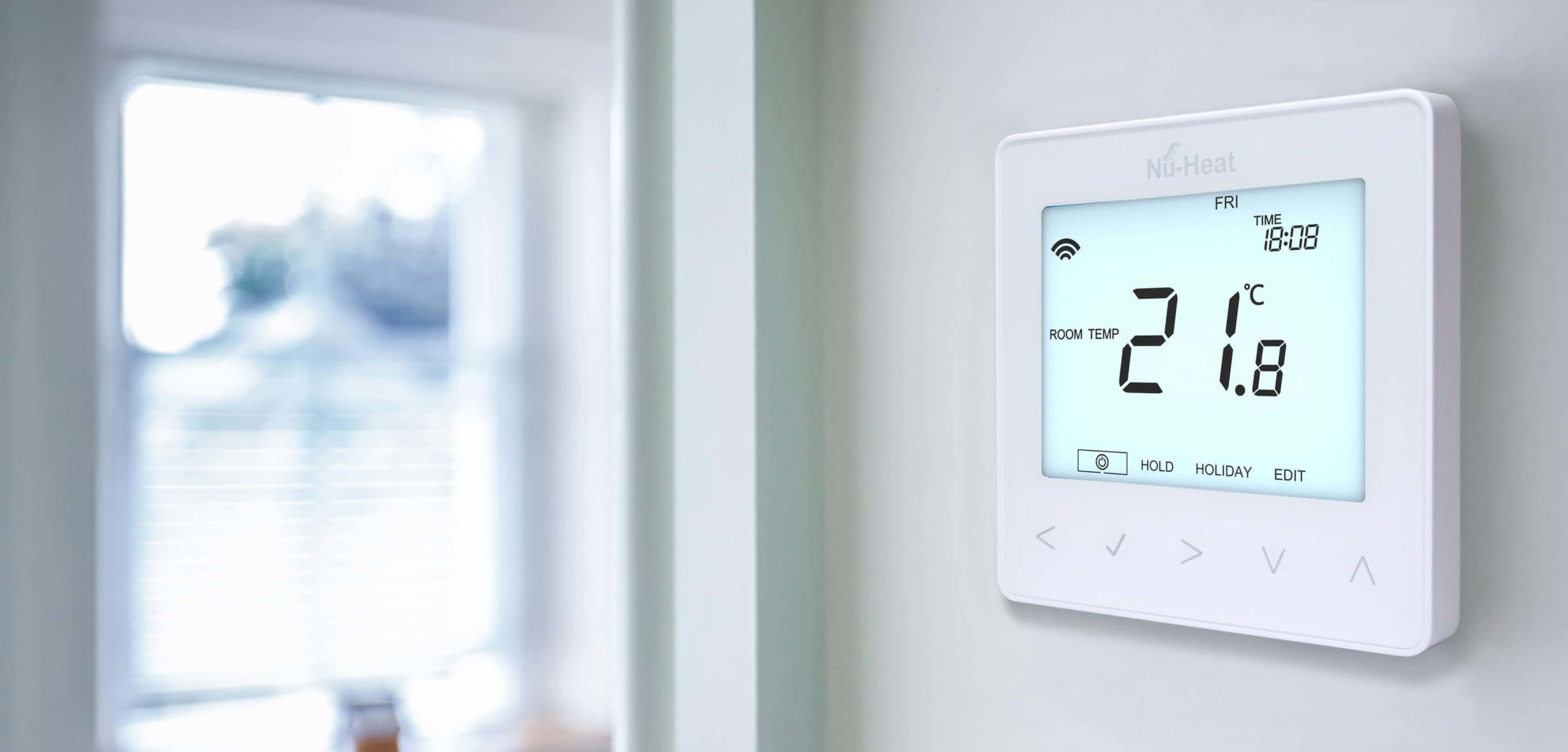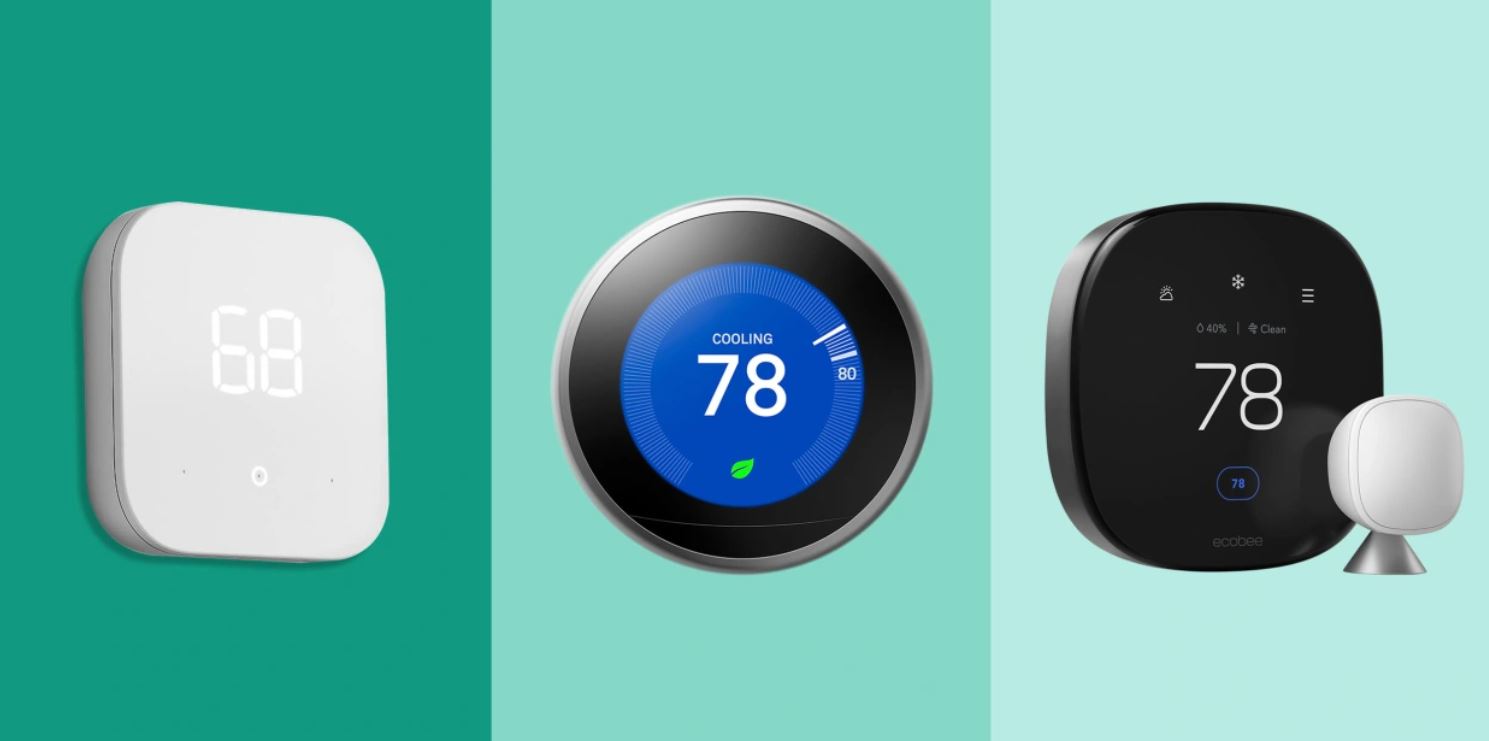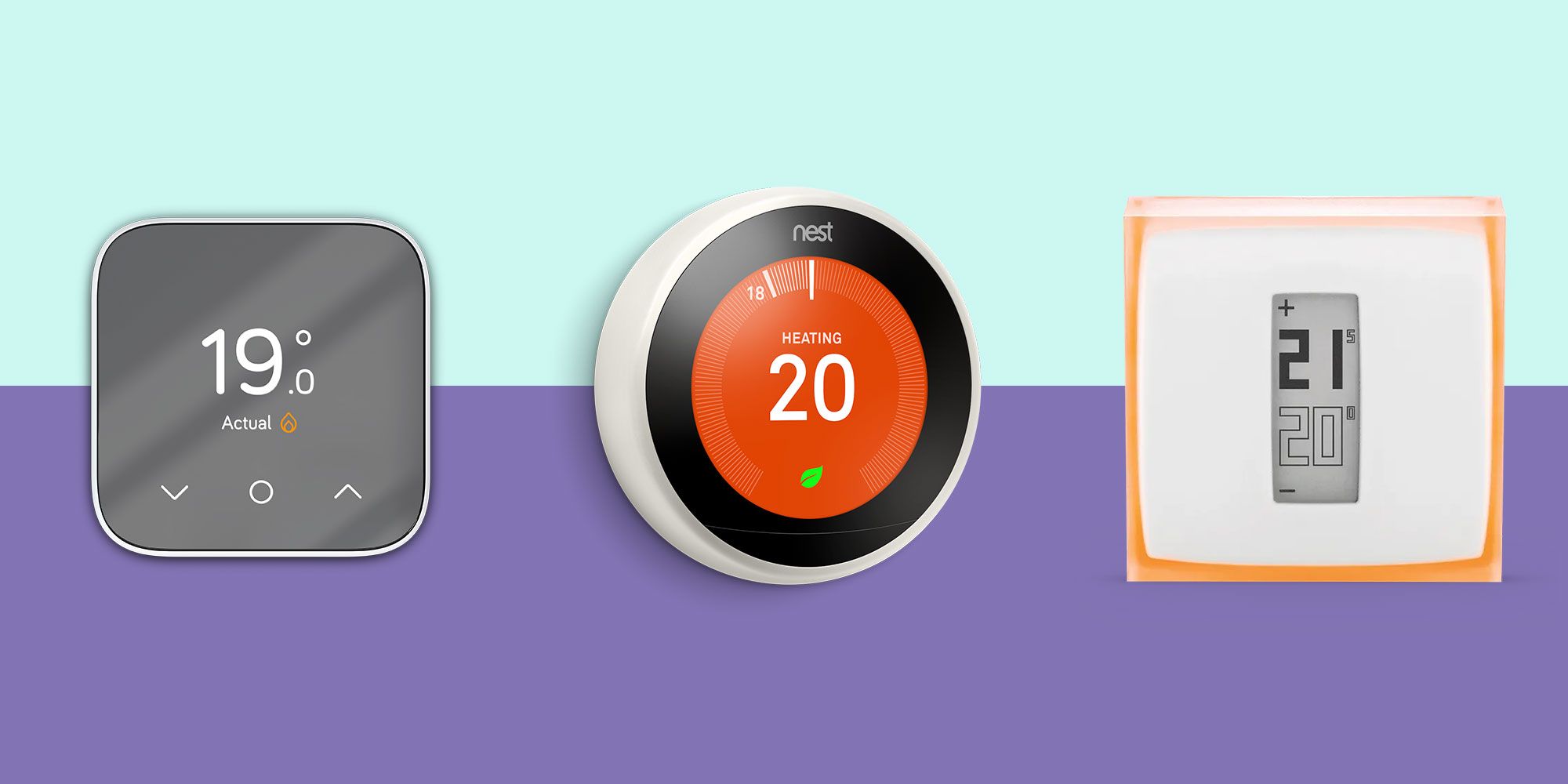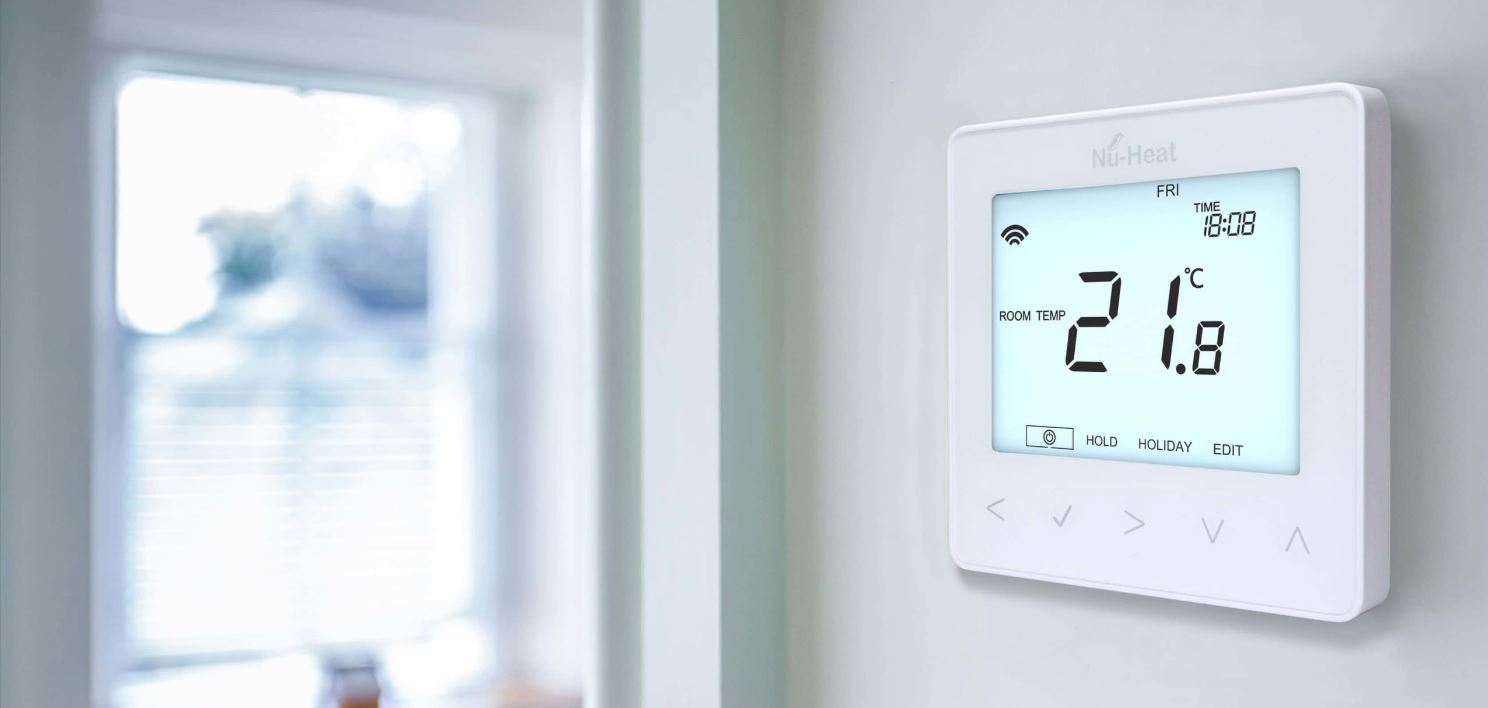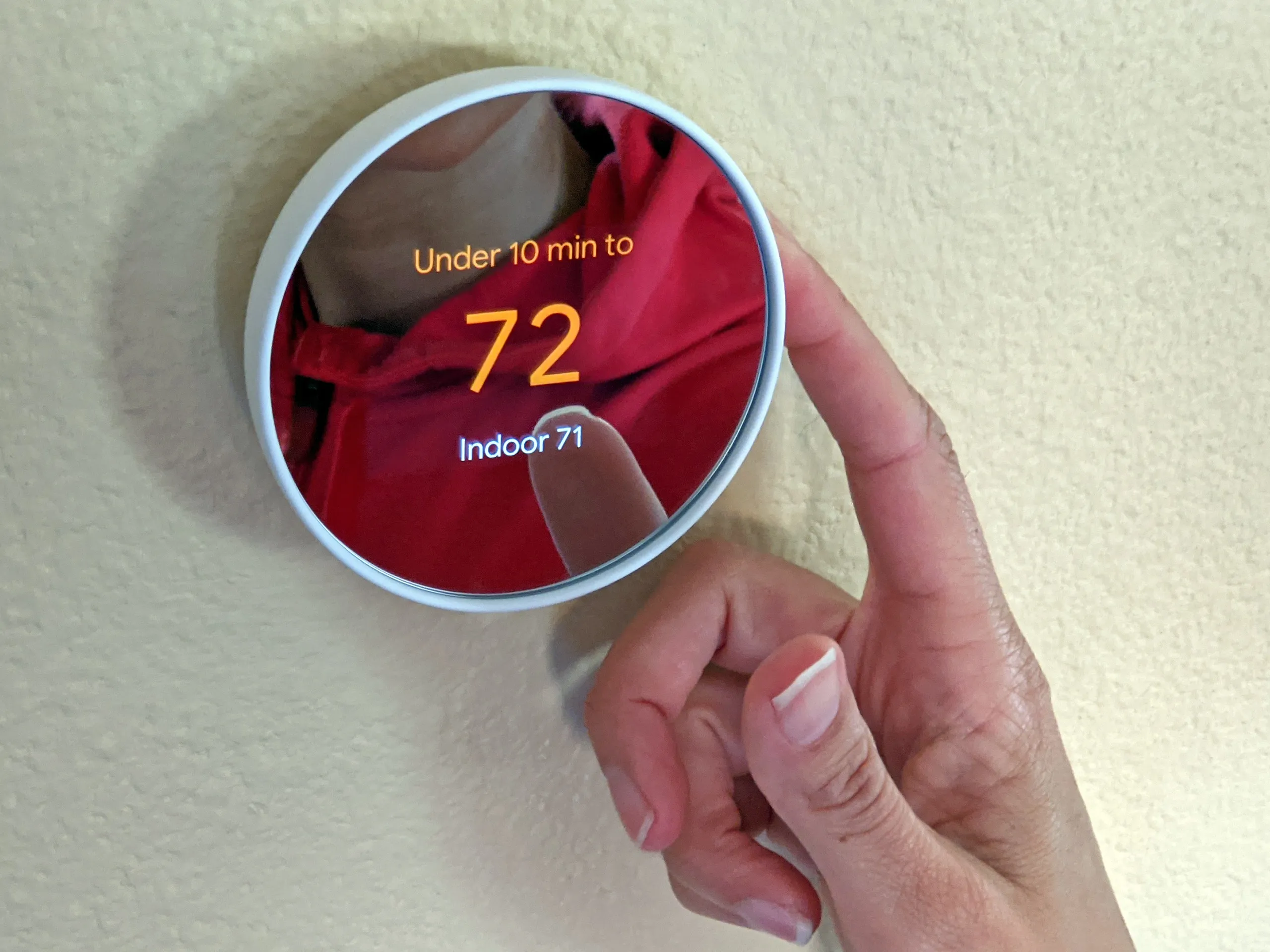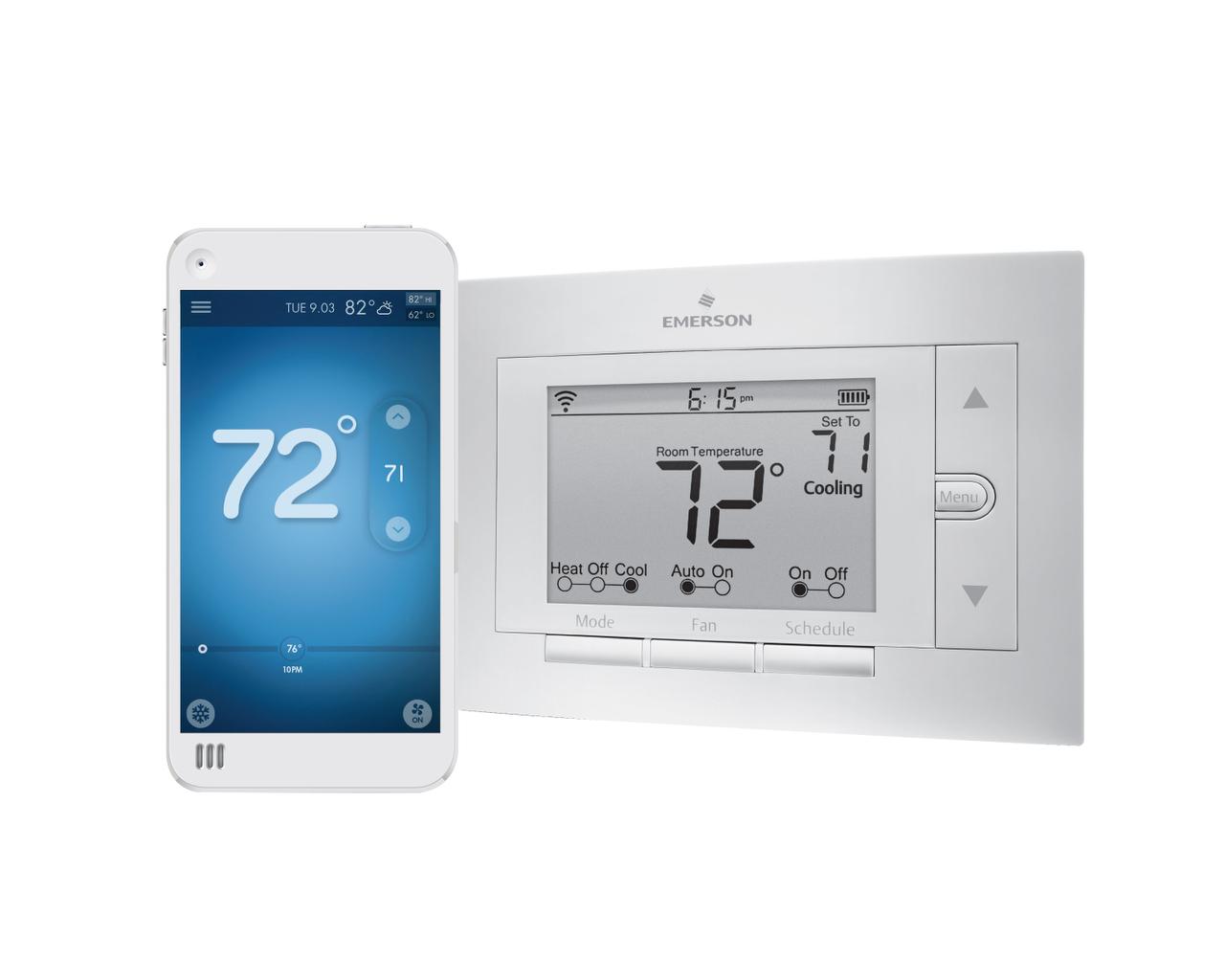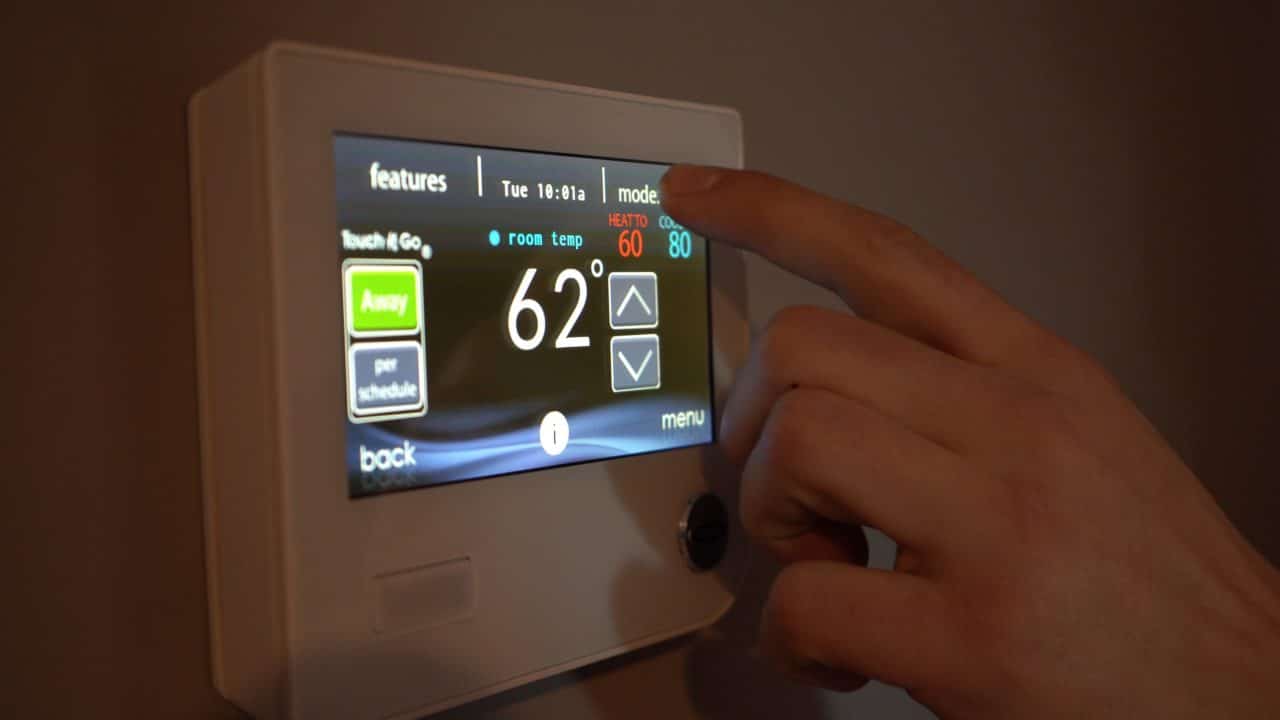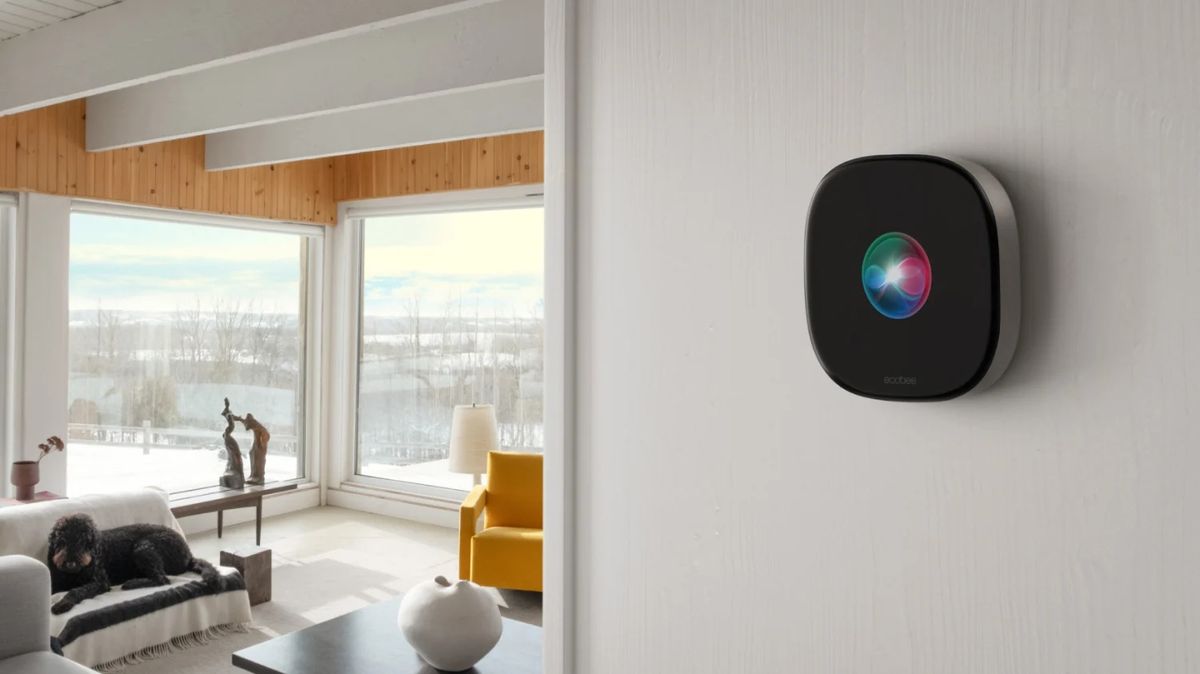Introduction
Welcome to our guide on smart thermostats and their compatibility with millivolt heaters. In this article, we will explore the concept of millivolt heaters, understand what smart thermostats are, and discuss the compatibility issues that arise when trying to integrate the two technologies.
Millivolt heaters are a type of heating system that operates on a low-voltage electrical circuit. They are commonly found in older homes, cabins, and spaces where a traditional furnace or electric heating system is not feasible. Millivolt heaters are often used in conjunction with a standing pilot light, which continuously generates a small electrical charge to power the heating system.
On the other hand, smart thermostats have gained popularity in recent years due to their ability to provide energy-saving features, remote control options, and intelligent scheduling capabilities. These innovative devices allow homeowners to easily regulate their indoor temperature, resulting in increased comfort and reduced energy consumption.
However, when it comes to compatibility between millivolt heaters and smart thermostats, there are some hurdles to overcome. Unlike traditional heating systems, millivolt heaters do not provide the necessary power source, known as a C-wire (common wire), that most smart thermostats require to operate. This lack of a C-wire can make it challenging to find a smart thermostat that can effectively control a millivolt heating system.
In the following sections, we will delve deeper into the compatibility issues between millivolt heaters and smart thermostats, explore the importance of the C-wire, and discuss the available options for homeowners looking to integrate a smart thermostat with their millivolt heating system. By the end of this article, you will have a clearer understanding of which smart thermostat options are suitable for your millivolt heater needs, even if you don’t have a C-wire.
What is a millivolt heater?
A millivolt heater is a type of heating system that operates using a low-voltage electrical circuit. Unlike traditional heating systems that rely on a 24-volt electrical circuit, millivolt heaters operate using a much smaller voltage, typically in the range of 0.2 to 0.5 volts.
The unique feature of millivolt heaters is their ability to generate heat without requiring an external power source. This is achieved through the use of a standing pilot light. The pilot light continuously burns, producing a small electrical charge known as millivolts. These millivolts then power the heating system, allowing it to produce heat.
Millivolt heaters are commonly found in older homes, cabins, and spaces where it is not practical to install a traditional furnace or electric heating system. They provide a reliable and efficient heating solution, particularly in areas with limited access to electricity.
One of the main advantages of millivolt heaters is their independence from external power sources. They can operate even during power outages, as long as the pilot light remains lit. This makes them a popular choice for remote locations or areas prone to frequent power disruptions.
Despite their reliable operation, one drawback of millivolt heaters is their limited control options. Without a compatible thermostat, homeowners have little control over the temperature settings. Turning the heater on or off typically involves manually adjusting the gas valve or extinguishing the pilot light.
Fortunately, with the advent of smart thermostat technology, it is now possible to enhance the control capabilities of millivolt heaters. Smart thermostats offer a wide range of features, such as remote control, programmable scheduling, and energy-saving options, which can greatly improve the overall comfort and efficiency of a millivolt heating system.
In the next sections, we will explore the compatibility challenges between millivolt heaters and smart thermostats and discuss some potential solutions to ensure a seamless integration between the two technologies.
What is a smart thermostat?
A smart thermostat is a modern and intelligent device that allows homeowners to control and monitor their home’s temperature remotely. Unlike traditional thermostats that require manual adjustments, smart thermostats provide advanced features and connectivity options that optimize energy usage and enhance comfort.
One of the key features of a smart thermostat is its ability to connect to the internet, enabling homeowners to control their heating and cooling systems from anywhere using their smartphones, tablets, or computers. This remote access allows individuals to adjust the temperature settings even when they are away from home, ensuring a comfortable environment upon their return and saving energy in the process.
In addition to remote control capabilities, smart thermostats offer a range of other innovative features. Many models come equipped with sensors that detect occupancy and adjust the temperature accordingly. For example, if no one is home, the smart thermostat can automatically lower the temperature to save energy. When someone returns, the thermostat can detect their presence and adjust the temperature back to a comfortable level.
Smart thermostats also offer advanced scheduling options, allowing homeowners to program specific temperature settings for different times of the day or days of the week. This intelligent scheduling ensures that the home is always at the desired temperature without the need for manual adjustments.
Furthermore, smart thermostats often provide energy usage reports and insights, delivering valuable information on energy consumption patterns and suggesting ways to reduce energy waste. By monitoring and analyzing energy usage data, homeowners can make informed decisions about their heating and cooling habits, resulting in potential energy savings and cost reduction.
It is important to note that not all smart thermostats are created equal. Compatibility with different heating systems, including millivolt heaters, can vary. Some smart thermostats require a C-wire (common wire) connection to provide power for their features and functions. However, millivolt heaters typically do not have a C-wire, which can create compatibility challenges when trying to integrate a smart thermostat with a millivolt heating system.
In the following sections, we will explore the compatibility issues between millivolt heaters and smart thermostats in more detail and discuss the options available for homeowners looking to upgrade their heating system with a smart thermostat.
Compatibility issues between millivolt heaters and smart thermostats
When it comes to integrating a millivolt heater with a smart thermostat, compatibility can be a major challenge. The main issue arises from the fact that most smart thermostats require a C-wire (common wire) connection to function properly. However, millivolt heaters typically lack a C-wire, making it difficult to power the smart thermostat.
The C-wire provides a constant source of 24-volt power to the thermostat, enabling it to operate various features, such as Wi-Fi connectivity, touchscreen displays, and programmable scheduling. Unfortunately, millivolt systems operate on a much lower voltage (typically 0.2 to 0.5 volts) and do not have a C-wire.
Without a C-wire, some smart thermostats may not have the necessary power to operate, resulting in reduced functionality or an inability to control the millivolt heating system effectively.
One option to overcome this compatibility issue is to install a transformer. A transformer steps up the voltage from the millivolt system to the 24-volt range required by most smart thermostats. However, this solution can be complicated and may require professional installation, as it involves rewiring and modifying the electrical setup.
Another approach is to look for smart thermostats specifically designed for millivolt systems. These thermostats are equipped to work with the lower voltage range of millivolt heaters, eliminating the need for a C-wire. However, the availability of such thermostats may be limited, and they may offer fewer advanced features compared to standard smart thermostats.
In some cases, homeowners may be able to work around the absence of a C-wire by using power-sharing or power-stealing technology. These techniques allow the smart thermostat to draw power from the existing millivolt system without needing a dedicated C-wire connection. However, not all smart thermostats support these methods, so it’s essential to check the compatibility before making a purchase.
It’s important to note that integrating a smart thermostat with a millivolt heater requires careful consideration and research. It’s recommended to consult with a professional HVAC technician or electrician to ensure compatibility and proper installation of the thermostat.
In the next section, we will discuss the significance of the C-wire and its role in smart thermostat compatibility with millivolt heaters.
The importance of a C-wire
When it comes to smart thermostat compatibility, the C-wire (common wire) plays a crucial role. The C-wire provides a continuous source of 24-volt power to the thermostat, enabling it to function properly and power the various features and functions.
The C-wire, also known as the common wire, completes the circuit in the thermostat system, allowing for the smooth flow of electricity. It provides a stable power source to the smart thermostat, ensuring that it has the necessary power to operate features such as Wi-Fi connectivity, touchscreen displays, and programmable scheduling. Without a C-wire, the functionality of a smart thermostat may be limited, and it may not be able to control the millivolt heating system effectively.
In the case of millivolt heaters, which operate on a much lower voltage range (typically 0.2 to 0.5 volts), a C-wire is typically not present. The absence of a C-wire in millivolt systems creates compatibility challenges when trying to integrate a smart thermostat. Most smart thermostats rely on the 24-volt power provided by the C-wire, and without it, they may not have enough power to operate or may function inconsistently.
It’s important to note that not all smart thermostats require a C-wire. Some models are specifically designed to work without it, utilizing power-sharing or power-stealing technologies. These methods allow the smart thermostat to draw power from the existing millivolt system without the need for a dedicated C-wire connection. However, homeowners need to ensure that the smart thermostat they choose supports these alternative power options.
While it is possible to use workarounds or alternative methods to power a smart thermostat without a C-wire in a millivolt heating system, it’s important to consider the limitations and potential drawbacks. Smart thermostats that operate without a C-wire may have reduced functionality or may not offer all the advanced features found in standard smart thermostats.
If you are considering installing a smart thermostat with a millivolt heater and want to ensure full compatibility and functionality, it is recommended to consult with an HVAC technician or electrician. They can assess your specific heating system, provide guidance on thermostat selection, and professionally install any required wiring modifications, such as adding a C-wire if necessary.
In the next section, we will explore the available options for homeowners looking to integrate a smart thermostat with a millivolt heater, even without a C-wire.
Smart thermostats that are compatible with millivolt heaters
Although the compatibility between millivolt heaters and smart thermostats can be challenging due to the lack of a C-wire, there are several smart thermostat options available that are specifically designed to work with millivolt heating systems. These thermostats are designed to operate on the lower voltage range of millivolt heaters, ensuring seamless integration without the need for a C-wire.
One popular option is the “Millivolt Thermostat,” which is specifically engineered to work with millivolt heating systems. These thermostats are designed with low-voltage compatibility and do not require a C-wire. They offer basic temperature control features and manual adjustments to effectively regulate the millivolt heater.
Another trustworthy option is the “Millivolt Smart Thermostat,” which combines the convenience of a smart thermostat with compatibility for millivolt heating systems. These thermostats typically feature advanced functions like Wi-Fi connectivity, remote access, and programmable scheduling. They are designed to operate on the lower voltage range of millivolt heaters, making them a suitable choice for homeowners seeking to upgrade their heating system without the need for a C-wire.
When considering a smart thermostat for a millivolt heater, it is essential to ensure that the model you choose supports millivolt systems and does not require a C-wire for operation. Manufacturers usually specify compatibility details in the product descriptions, user manuals, or on their websites, which can guide your decision-making process.
However, it’s important to note that smart thermostats designed for millivolt heaters may offer limited features compared to standard smart thermostats. The lack of a C-wire may restrict certain advanced functions like advanced scheduling or occupancy detection. It’s recommended to review the specifications and features of the millivolt-compatible smart thermostats to ensure they meet your needs and preferences.
If you are unsure about the compatibility or installation process of a smart thermostat with your millivolt heater, it’s advisable to consult with a professional HVAC technician or electrician. They can provide guidance on selecting the appropriate smart thermostat for your millivolt system and ensure a seamless and safe installation process.
In the next section, we will discuss alternative options for homeowners with millivolt heaters that do not have a C-wire and still want to use a smart thermostat.
Thermostat options for millivolt heaters without a C-wire
For homeowners with millivolt heaters that do not have a C-wire, there are still viable options available to integrate a smart thermostat into their heating system. Although most smart thermostats rely on a C-wire for power, there are alternative solutions to power the thermostat without the need for a dedicated C-wire connection.
One option is to use a power extender kit, also known as a common wire adapter or C-wire adapter. This kit allows you to create a virtual C-wire by utilizing the existing wiring setup of your millivolt heating system. The power extender kit provides the necessary 24-volt power to the smart thermostat, enabling it to function properly and control the heating system effectively. It’s important to note that the installation of a power extender kit may require some electrical knowledge or professional assistance.
Another solution is to use a battery-powered smart thermostat. Battery-powered thermostats do not rely on a C-wire for power, as they are powered by replaceable batteries or rechargeable batteries. These thermostats are designed to operate independently of a C-wire, making them suitable for millivolt heating systems without the need for additional wiring or modifications. However, it’s important to regularly check and replace the batteries to ensure uninterrupted operation of the smart thermostat.
Furthermore, some smart thermostats feature power-sharing or power-stealing technology, allowing them to draw minimal power from the millivolt heater itself. These thermostats can operate effectively without a C-wire by utilizing the existing power source of the heating system. However, it’s crucial to verify the compatibility and specifications of the smart thermostat to ensure it supports power-sharing or power-stealing capabilities.
When considering thermostat options for millivolt heaters without a C-wire, it’s essential to research and confirm compatibility with your specific heating system. Different manufacturers may offer varying solutions and features. Be sure to review product descriptions, user manuals, and compatibility information to ensure a suitable match between the smart thermostat and your millivolt heater.
If you are uncertain about the compatibility or installation process, it’s recommended to consult with a professional HVAC technician or electrician. They can evaluate your millivolt heating system, provide expert advice on thermostat options, and assist with the proper installation and wiring modifications, if necessary.
In the next section, we will conclude our discussion and summarize the key points regarding smart thermostats and millivolt heaters.
Conclusion
Integrating a smart thermostat with a millivolt heater can present compatibility challenges due to the absence of a C-wire. However, there are options available to overcome these challenges and enjoy the benefits of a smart thermostat in your millivolt heating system.
We explored the concept of millivolt heaters, which operate on a low-voltage electrical circuit and utilize a standing pilot light to generate heat. We also learned about smart thermostats, which offer advanced features and remote control capabilities to enhance comfort and energy efficiency.
Compatibility between millivolt heaters and smart thermostats can be achieved by using specific thermostats designed for millivolt systems or by utilizing alternative power solutions, such as power extender kits or battery-powered thermostats. These options allow homeowners with millivolt heaters to enjoy the benefits of smart thermostat technology without the need for a C-wire.
It’s crucial to research and verify the compatibility of smart thermostats with millivolt heaters before making a purchase. Checking product specifications, consulting manufacturer websites, and seeking professional guidance can help ensure a seamless integration and optimal performance.
If you are unsure about the compatibility or installation process, it is highly recommended to consult with an HVAC technician or electrician who can provide expert advice and assistance.
By exploring the available options and understanding the compatibility challenges, you can successfully integrate a smart thermostat into your millivolt heating system, enhancing convenience, comfort, and energy efficiency in your home.









